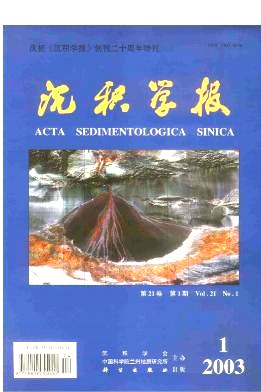HTML
| [1] | [1]Gorsline D S, Emery K O. Turbidity current deposits in San Pedro and Santa Monica basins of southern California[J]. Geol Soc America Bull, 195 9, 70:279~290 [2]Sullwold H H, Jr. Tarzana fan-deep submarine fan of late Miocene age, Los Angeles County, California[J]. AAPG Bull, 1960,44:433~457 [3]Jacka A D, et al. Permian deep-sea fans of the Delaware mountain gr oup (Guadalupian), Delaware basin[J]. Soc Econ Paleontol Mineral Permian, Basi n Section Publ, 1968, 68~11: 49~90 [4]Walker R G. Deep-water sandstone facies and ancient submarine fans: Mo dels for exploration for stratigraphic traps[J]. AAPG Bull,1978, 62:932~966 [5]Bauma A H, Normark W R, Barnes N E. Submarine fans and related turbidit e systems[M]. New York: Springer-Verlag, 1985. 351 [6]Shanmugam G, Moiola R G. Submarine fans: characteristics, models, class ification, and reservoir potential[J]. Earth Sciences Review,1988,24:383~428 [7]刘招君,王东坡,何起祥. 攀西地区上三叠统湖泊浊积岩沉积特征及其地质意义 [A]. 见:张云湘主编. 中国攀西裂谷文集[C]. 北京:地质出版社,1985.298~306[Li u Zhaojun, Wang Dongpo, He Qixiang. Sedimentary Character and Geological Signifi cance of Upper Triassic Lake Facies Turbidite in Panxi Area[A].In:Zhang Yunxia ng, ed. Contribution to Panxi Rift China[C].Beijing: Geological Publishing Hou se,1985.198~306] [8]吴崇筠,李纯菊,等. 断陷盆地中的浊积岩[A]. 见:中国石油学会石油地质委员会主编. 碎屑岩沉积相研究[C].北京:石油工业出版社,1988. 1~17[Wu Chongyun, L i Chunju, et al. Turbidite in faulted subdidence-lake basin[A]. In:Petrol eum Geology Institute of Chinese Petroleum Society, ed. Study of Clastic Sedim entary Facies[C].Beijing: Petroleum Industry Press,1988.1~17] [9]丘东洲,何治亮. 陆盆扇体沉积的形成机制及其油气意义[A]. 见:中国石油学会石油地质委员会主编. 碎屑岩沉积相研究[C].北京:石油工业出版社,1988.148~154[ Qiu Dongzhou,He Zhiliang.Oil and Gas Reservoir in Continental Basin[A]. In:Pet roleum Geology Institute of Chinese Petroleum Society, ed. Study of Clastic S edimentary Facies[C]. Beijing: Petroleum Industry Press,1988.148~154] [10]Allen P A and Allen J R. Basin analysis: principles and applications: Blackw ell Scientific Publications[C]. Oxford, London. 1990 [11]Posamentier H W and Vail P R. Eustatic controls on clastic deposition Ⅱ-Se quence and systems tract models[A]. In: Wilgus C K, et al, eds. Sea-level changes: an inlegrated approach[C]. SEPM Special Publication, 1988, 42:125~15 4 [12]刘招君,董清水,王嗣敏等. 陆相层序地层学导论与应用[M]. 北京:石油工业出版社,2002[Liu Zhaojun, Dong Qingshui, Wang Siming, et al. Introduction to Cont inental Sequence Stratigraphy & Application[M]. Beijing: Petroleum Industry P ress, 2002] [13]Van Wagoner J C, et al. Siliciclastic sequence stratigraphy, in well log s, cores and outcrops: concepts for High-Resolution Correlation of Time and Fac ies[M]. Published by the American Association of Petroleum Geologists. Oklaho ma, USA, 1990 |






 DownLoad:
DownLoad: